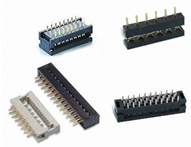The basic security of the Internet of Things can be divided into three simple steps.
If there is any debate about how popular the Internet of Things (IoT) is, it can now stop because the number of IoT devices in 2018 is expected to exceed that of smartphones. Companies such as Google, Apple, Microsoft and other major companies have invested heavily in IoT technology, which is widely regarded as the next wave of technology.
But like any new trend, there are still some issues that need to be addressed. For those who have just started the application of IoT devices, continue reading the following to help understand more IoT security issues and coping strategies.
What is the inherent security risk?
There are so many companies involved in the development of IoT technology, which is very important for the diversity and availability of the Internet of Things, but it also brings some problems. At present, large companies in the field compete with each other to compete for the dominance of the Internet of Things. As their battles become more intense, smaller companies are creating their own IoT agreements.
Unfortunately, the unified standards for the Internet of Things have not yet been introduced. It is hard to say whether consensus can be reached. The diversity of the Internet of Things also makes it difficult for developers to build any large-scale security solutions.

Before further standardization, there are three lines of defense to ensure that IoT devices are safe and secure.
First line of defense: Protect IoT device passwords and keep them up to date
This may seem simple, but ensuring that IoT devices have a secure password and staying up-to-date is a very important and often overlooked step to protecting information security. Unfortunately, most IoT devices are neither secure nor obsolete. For example, many IoT gadgets can be easily configured and plugged in.
Some devices may seem harmless, but if you connect directly to a digital assistant such as IPhone or Alexa, the default settings can seriously threaten your security.
You will need to change the device's default username and password and, if possible, set up multiple authentication; you will also need to verify that the device has automatic updates, and if not, periodically check the device manufacturer for firmware and software updates.
Second line of defense: ensuring network security
When the device is sufficiently secure, you also need to pay attention to the network security of the connected device. There are many ways to protect your network from security threats, such as the following:
Network Security Protocol: Network security protocol is the foundation for creating a network security environment and a key technology for building a secure network. Make sure that the modem or router does not use any default passwords, and that the router uses a secure Wi-Fi standard, consider setting up a separate network for the guest to use for the guest to make their smart device independent of the network connection.
Firewall: A firewall is a term that is often mentioned but rarely explained. Simply put, a firewall is an electronic barrier designed to prevent hackers from accessing certain sensitive information. Your computer operating system may have some sort of firewall software, but this does not protect your other devices on the network.
Although using a built-in firewall on the operating system is better than nothing, in fact, if the hacker has passed through the operating system firewall, they are already in your computer. On the other hand, setting the firewall through the router, all Internet traffic must pass. This router, the firewall can help filter out potential attacks.
Virtual Private Network (VPN): The VPN service gets all the information from the network and encrypts it. Encryption allows you or your smart device to connect to the network as usual. With data encryption, it can be considered that the data is transmitted securely on a dedicated data link, just as a dedicated network is set up, but in fact the VPN uses a public link on the Internet, so the VPN is called virtual. Private networks, in essence, use encryption technology to encapsulate a data communication tunnel on the public network. For full protection, you need to set up VPN client software on your router, as setting up a VPN on each individual device can be difficult or impossible. Unfortunately, accessing a VPN service usually requires a monthly/annual fee, and since your information must go through an external source before it reaches its final destination, this may make your network connection slow.
Third line of defense: dismantling old equipment
With the advent of more and more new IoT devices and the regular replacement of old devices, it is increasingly easy to forget every connected device on the network. But old IoT devices may be configured with old security protocols, login passwords, and a host of other threats to the network.
Every device in the Internet of Things is a potential weakness and must be protected. Therefore, if old devices are no longer in use, you will need to completely disconnect the old device's network connection or even reset the factory mode to reduce the number of devices you must know.
to sum up
The basic security of the Internet of Things can be divided into three simple steps: protecting devices, protecting the network, and knowing what devices are in the Internet of Things. Keep in mind that while the devices themselves may not contain sensitive information, they may open up your web portal and the older the devices, the greater the security risks they pose. The idea of ​​the Internet of Things is to make our lives easier and more convenient, but security is always a top priority that we must take seriously.
Antenk dip plug connector Insulation Displacement termination connectors are designed to quickly and effectively terminate Flat Cable in a wide variety of applications. The IDC termination style has migrated and been implemented into a wide range of connector styles because of its reliability and ease of use. Click on the appropriate sub section below depending on connector or application of choice.the pitch range from 1.27mm,2.0mm, and 2.54mm here.

IDC DIP Plug Connectors Key Specifications/Special Features:
Materials:
Insulator: PBT, glass reinforced, rated UL94V-0
Contact: phosphor bronze or brass
Electrical specifications:
Pitch: 1.27/2.0/2.54mm
Current rating: 1A, 250V AC
Contact resistance: 30M Ohms (maximum)
Insulation resistance: 3,000M Ohms, minute
Dielectric withstanding voltage: 500V AC for one minute
Operating temperature: -40 to +105 degrees Celsius
Terminated with 1.27mm pitch flat ribbon cable
Number of contacts: 06,08, 10, 12, 14, 16, 20, 24, 26, 30, 32,34, 40, 50, 60 and 64P
With RoHS mark
Used for ribbon cables
DIP Plug Connectors Application
Wire to Board
Apply to Industries : PC, IPC, Consumer Electronics, Automotive, Home Appliance, Medical
Dip Connector,Dip Plug Connector,Dip Direct Pulg Connector,IDC Plug Connector,Idc connector dip plug,1.27mm Dip Plug Connector,2.0mm Dip Plug Connector, and 2.54mm Dip Plug Connector
ShenZhen Antenk Electronics Co,Ltd , https://www.pcbsocket.com